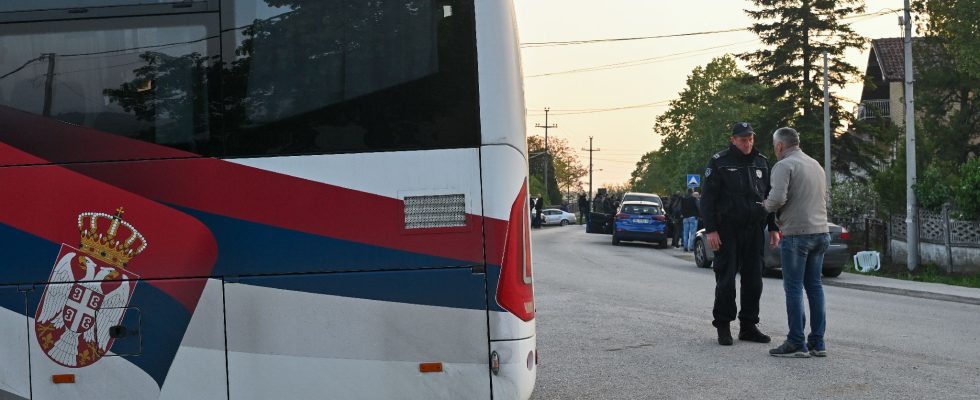Serbia is in mourning. Serbian President Aleksandar Vucic announced on Friday May 5 a vast disarmament plan after two killings committed in less than 48 hours in this small Balkan country. The two shootings, in which 17 people were killed, horrified the Serbs. “It’s an attack on our entire country and all citizens feel it,” said the head of state. He promised to drastically reduce the number of weapons held legally and to tackle the problem of their illegal circulation.
The government said in a statement that it wanted to “reduce by 90% the number of small arms held by individuals and businesses”. The Interior Ministry will also “launch a public appeal to holders of illegal weapons and explosive devices to hand them over (to the authorities) within a month without risk of prosecution”. Florent Marciacq, co-director of the Balkan Observatory at the Jean-Jaurès Foundation, explains the reasons why Serbs are attracted to firearms.
L’Express: Some 765,000 weapons, including more than 232,000 pistols, are legally registered in the country. How can this marked interest of the Serbs in arms be explained?
Florent Marciacq: Several elements explain why these firearms are quite widespread in this country. First: their availability since the end of the wars in the region in the 1990s, a period during which they were distributed en masse. The Serbs kept them at home, in their attics, both pistols and automatic weapons. They are not necessarily used and a good part is not recorded, so it is difficult to follow them. Another element: the use of weapons in a more legal way. It can be linked with the practice of hunting, very popular in the region.
This attraction for weapons is part of a particular culture: that of a form of virility, with a fairly macho and patriarchal structure of society where being armed is valued. For some men, owning and using weapons is a marker of masculinity.
The war in the former Yugoslavia greatly accelerated this situation. At the end of the war, it was estimated that there were around four million weapons in circulation in the Balkans, particularly in Serbia (Editor’s note: Europol estimates between 3.2 and 6.2 million the total number of weapons currently circulating in the Western Balkans). It is also estimated that there are between 10 and 30 guns per 100 inhabitants in Serbia, with some Serbs no doubt having several.
Before this war, Yugoslavia was non-aligned. She therefore had to take responsibility for her safety. Serbia thus has a developed arms sector: it produces small arms and exports them. All of these weapons feed organized trafficking networks. They are then found in other countries, in terrorist attacks or in the settling of scores linked to drug trafficking. It is therefore organized crime and not street crime. However, mass killings are very exceptional in Serbia.
Can the measures announced by Aleksandar Vucic, in your opinion, really have an impact on the disarmament of the country?
The Serbian president had no choice: he had to send a signal after what happened. If we must welcome his statement, we must also take it with a grain of salt. The Serbian president is indeed the figurehead of a form of democratic disintegration in the region. In recent years, we have observed an autocratic drift in Serbia. These killings are part of this context of autocratic consolidation. A poll released a few years ago in Serbia estimated that a major part of the population wanted a “strong” leader at the head of the country.
The Serbian President uses a form of warlike rhetoric, both inside the country – vis-à-vis journalists and civil society – and outside – vis-à-vis Kosovo, Albanians, Muslims, etc. In other words, the context is not very favorable to the realization of the disarmament that he calls for insofar as he himself contributes to nourishing this warlike rhetoric.
We therefore find ourselves in a situation where there are on the one hand these calls for a form of political violence, which the Serbian president uses as his business to consolidate his power, and on the other hand his desire to disarmament of the population. It is a contradiction. If we make these kinds of announcements but, at the same time, we say that Serbia is threatened, that there are “terrorists”, that the opponents are “traitors”, then necessarily that does not encourage people to voluntarily surrender their arms.
Why have previous disarmament initiatives failed?
France and Germany launched, at the end of 2017, an initiative in the whole of the Balkans against the trafficking of small arms, under the aegis of the Organization for Security and Cooperation in Europe (OSCE) (Editor’s note : it sets 7 major objectives that the governments of the region undertake to achieve by 2024, and defines specific monitoring indicators).
This initiative aimed to try to better control and register more weapons, with an awareness campaign carried out among the population in order to make them aware of the danger of possessing them. But it is very difficult to obtain results: you need strong political support on the ground in order to move these initiatives forward, and all this does not happen overnight.
